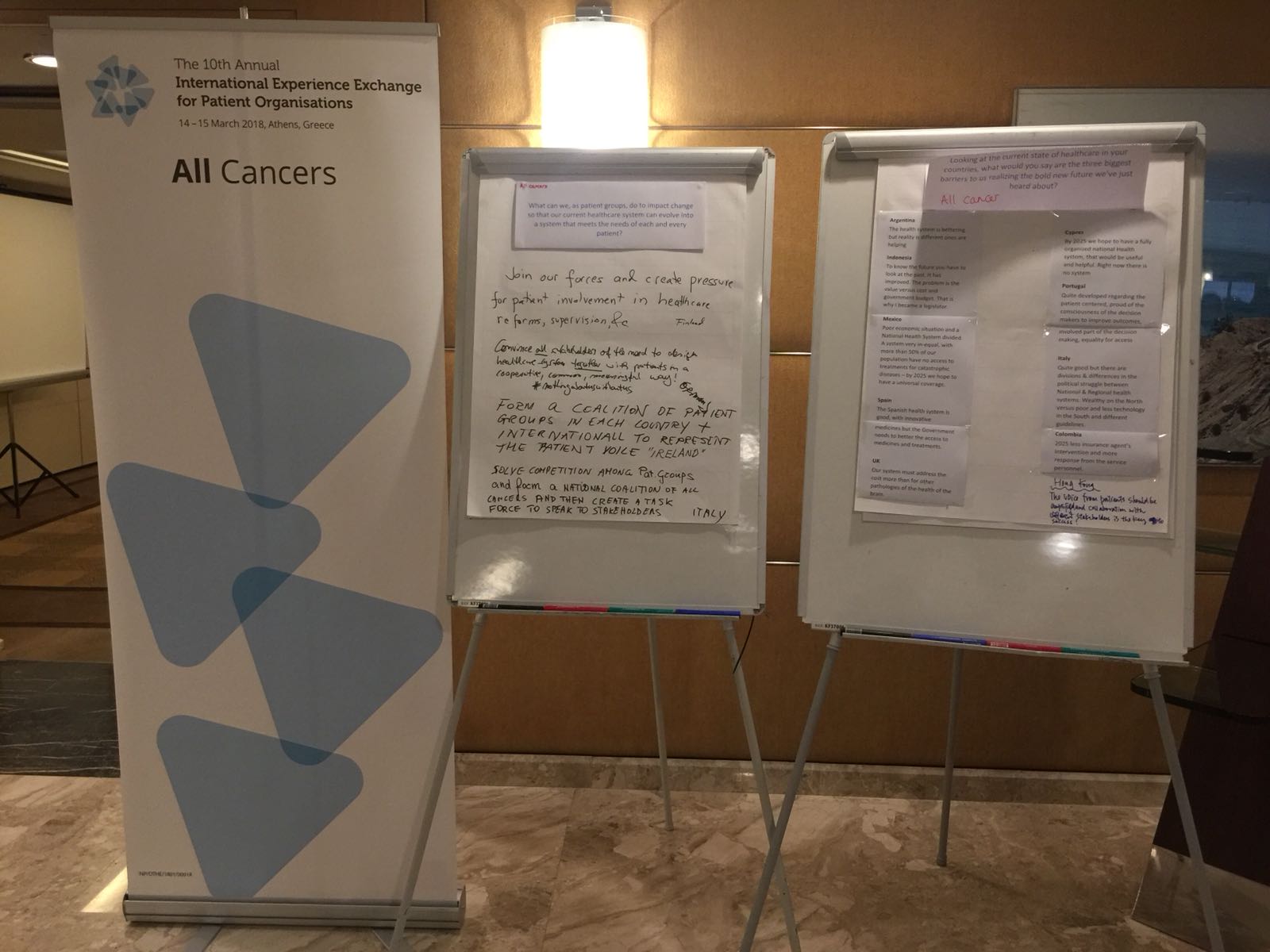
癌症資訊網慈善基金參與在雅典第10 屆IEEPO國際病人組織交流大會,
第1日會議中亮點 : Digital Healthbe a smart patient, data Apps information,
大數據時代應用與挑戰、人工智能、病人電子數據模式結集探討. 並參與免疫治療病人交流會議,了解免疫治療模式及分享各國癌症病人組織經驗.
.jpg)
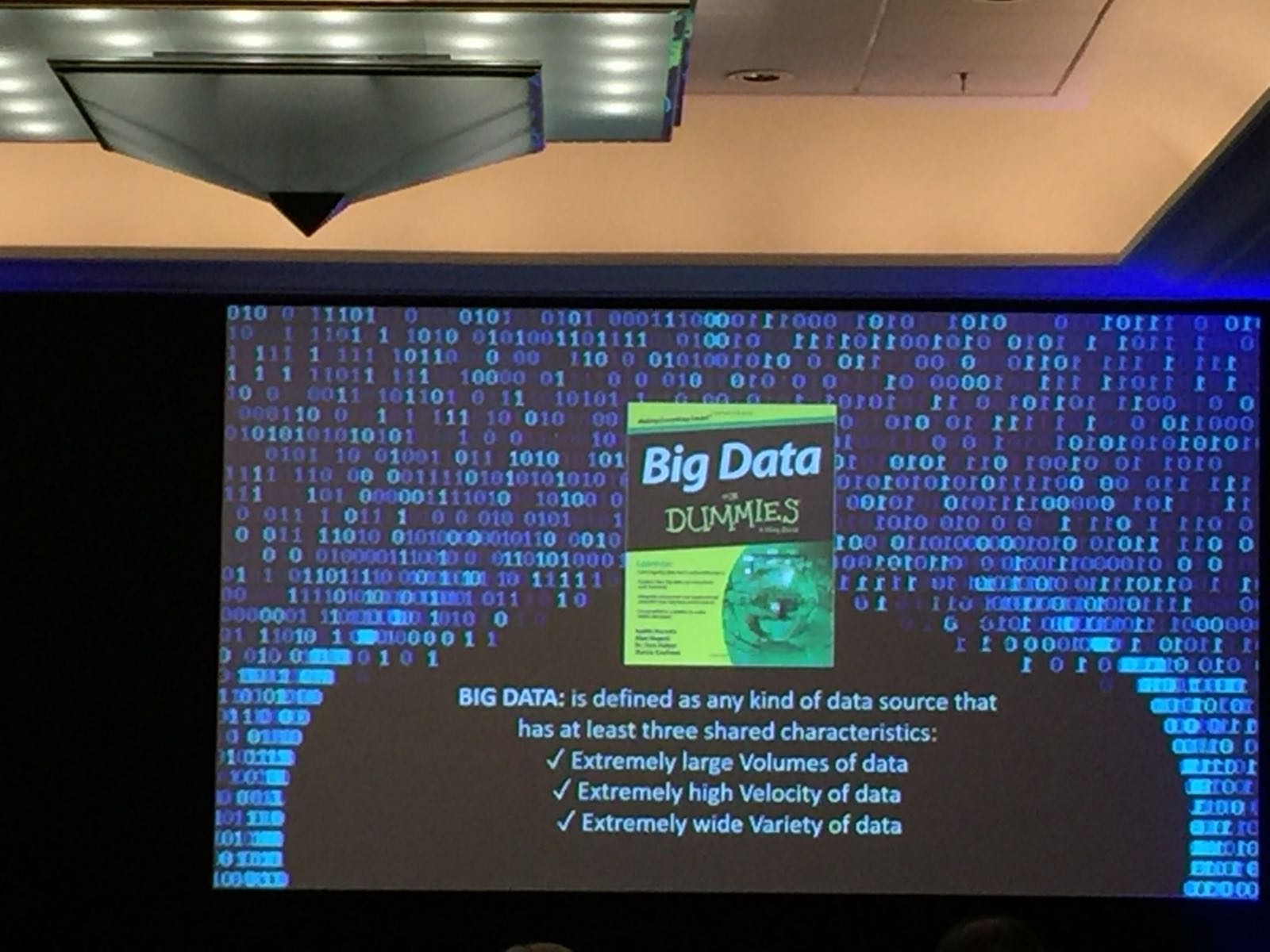
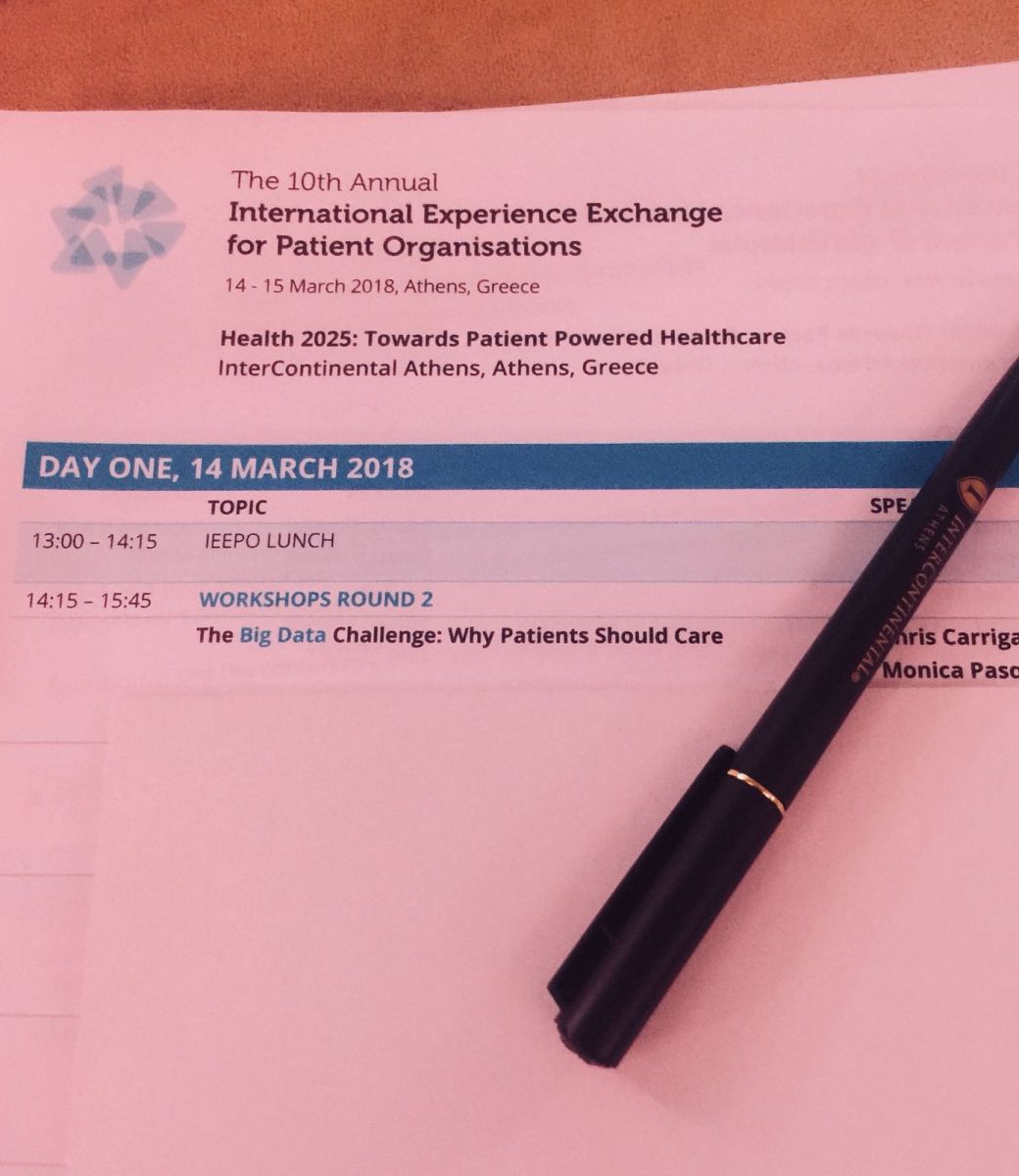
遺傳突變基因 籲驗血檢查 卵巢癌死亡率達5.5%

卵巢癌是本港女性十大癌症發病率的第六位,患卵巢癌的女性在十年間上升40%。由於卵巢癌於骨盆深處,所以卵巢癌早期病徵不明顯,不少患者摸到明顯腫塊才求醫,癌症已到後期,結果增加了死亡率。在多種婦科癌症中,卵巢癌的死亡率偏高達5.5%。目前有10%的卵巢癌與遺傳基因突變有關,當中BRCA的基因突變更有一半機會遺傳至下一代。
香港遺傳性乳癌家族資料庫搜集了2817患者的數據,發現同時患有乳癌有卵巢癌家族史中,出現BRCA1型基因突變高達39.4%,而沒有家族史的BRCA1型基因突變患者亦有25.6%。資料庫主席鄺靄慧(圖右)指,在BRCA1基因突變型卵巢癌中,40%患者為50歲以下,而家族史中曾有成員患乳癌及卵巢癌,均較高風險。要知道有否帶有遺傳性基因突變,可驗血檢查。
現年48歲的黃小姐(圖中),因為BRCA的基因突變遺傳,10年間先後患上乳癌及多次的卵巢癌復發。在07年乳癌後康復,12年因嘔吐及腹部脹痛,直至抽血檢查才確診患上第三期卵巢癌,並於14年及16年再度復發,接受近30次化療。她指,化療是最辛苦,「每次落藥後半小時,不斷屙嘔、肚痛」要醫生開安眠藥才可入睡。
醫學界近年針對BRCA研發新的標靶藥物,有效降低癌症復發的風險,對基因突變型卵巢癌療效尤其顯著。黃小姐在服用新標靶藥物後雖仍會感到疲累,但副作用大大減少。惟新藥物費用較昂貴,28日藥需5萬元,因此資料庫推出BRCA基因突變型卵巢癌藥物資助計劃,為有需要患者提供該藥物資助,詳情可查看www.asiabreastregistry.com。
文章來自:AM730
https://www.am730.com.hk/news/健康/遺傳突變基因-籲驗血檢查-卵巢癌死亡率達5-5-118908
我有正能量:抗癌「動起來」
「我以前見到體育節目會即刻轉台,覺得好悶,點會睇?」曾曉慧曾經與不少女生一樣,不喜歡運動,打場羽毛球已經很難得。二十六歲的時候確診患上血癌後,卻為衣櫃增添了大量運動服裝,以前最討厭的運動店變成逛街最愛。治療病症的四年間,她重新提起筆桿,一筆一畫道出在運動路上的堅持,冀以自身經驗鼓勵同路人。
.jpg)
歷經巨變,曉慧開始運動生涯。
曉慧小時候努力讀書,長大後專注工作,以為人生道路會一直平坦下去。直至一天,她的腿突然腫得像豬蹄,家庭醫生檢查數次也沒有結果,只能轉介她到醫院驗血,竟發現血液有問題,「我當時呆咗,無諗過咁大件事會發生喺我身上。」等候時間愈長,不安感愈重,曉慧忍不住抱着伴侶哭起來。伴侶驚覺人生無常,抓緊時間向曉慧求婚,她口裏答應,但心裏又怕連累另一半。
化驗報告顯示,曉慧白血球數量比正常人高四倍,血色素和血小板則低很多,證實患上急性血癌,須即日開始化療。護士在手上種了「鹽水痘」後,就把紅色的化療藥打到曉慧身體裏,藥帶刺激性,注射得太快會有灼熱感,曉慧只能忍受。化療令她的身體變得十分虛弱,「有個室友同我講,佢見住我瞓足十幾個鐘,郁都唔郁」,簡單如一小時的連續散步也用了她兩星期時間訓練。
「唔想好番後身體都咁差」
她驚覺自己的身體機能太弱,默默許諾要重新運動,「雖然醫生話個病康復率好高,但我唔想好番後身體都係咁差。」曉慧先以行山為目標,配搭瑜伽改善筋骨缺乏鍛煉的問題。期間,伴侶突然邀請一起參加三公里馬拉松比賽,「既然散步可以,身體亦開始好轉,點解唔試吓。」於是她以馬拉松為動力,堅定運動的決心。
運動令化療帶來的副作用大大降低,肌肉量增加,負面情緒減低,令她喜歡上運動。剛好有朋友是高強度間歇訓練(HIIT)的教練,她也去報名參加,「第一次訓練要做一個連續跳躍一分鐘的動作,做完真係喘晒氣,無晒力,痠痛維持咗兩三日」。
.jpg)
在伴侶的陪伴下,曉慧開始運動。
.jpg)
曉慧的腰部接受過三次骨髓穿刺,由醫生刺穿骨頭到骨髓,抽出骨髓檢驗。
印證努力成果 挑戰馬拉松
「沒有奇迹、只有累積」印證了她的努力,以前連散步都有困難,堅持運動後,連數天的台灣旅遊都能克服。她更於社交網站開設專頁,分享抗病及運動經歷,本意雖是打發時間,卻從中找到力量,「曾經有病人私訊我,話睇到我嘅經歷後重燃佢哋嘅希望,我都好受鼓舞」,剛參加完馬拉松比賽的她期望,未來能在一小時十分鐘內完成十公里賽事。化療療程告一段落,曉慧的運動生涯才剛開始。
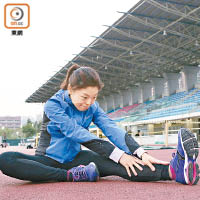
從前不諳運動的曉慧已經成為運動能手。
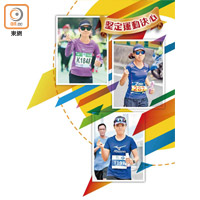
曉慧已參加多次馬拉松比賽,期望下次能在一小時十分鐘內完成十公里賽事。
圖:專案組
文:陳綺雯
文章來自:東方日報
http://orientaldaily.on.cc/cnt/news/20180311/00176_120.html
HPV自我採檢社區計劃
.jpg)
甚麼是HPV自我採檢?
|
自我採樣棒是一種子宮頸檢測工具,讓女性可以在家中採集子宮頸和陰道的細胞樣本,用作HPV測試。 |
 |
自我採檢有甚麼好處?
|
HPV自我採樣棒是一種可靠的檢測工具,讓女性可以避免接受子宮頸抹片檢查所帶來的不便,而且操作簡單,方便,及可靠,更可鼓勵沒有接受定期篩查測試的女性參與檢測。 我們的研究顯示,超過50%受訪女士表示會接受自我採樣作為將來的篩查工具,特別是從來沒有接受過子宮頸抹片檢查的女性,更傾向選擇自我採檢。 |
如何自我採集樣本?
測試的結果
如果你的HPV測試結果呈陽性,表示你需要與家庭醫生作進一步檢查。感染HPV並不代表你已患上子宮頸癌,絕大多數的HPV病毒都能由免疫系統清除,但你有比較大的機會出現子宮頸細胞病變,因此定期檢查對於預防子宮頸癌是十分重要。
HPV測試結果呈陰性意味著在子宮頸細胞中沒有發現HPV病毒,但你應該如常接受定期篩查,以預防子宮頸癌。
如有疑問,請馬上與你的家庭醫生聯絡,
以了解你的測試結果及評估是否需要作進一步的檢查。
.jpg)
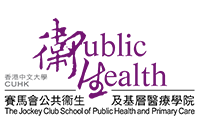
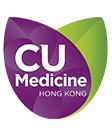
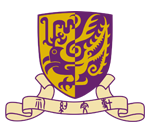
子宮頸癌是女性十大癌症之一,於2015年在香港女性最常見癌症中排第7位,2015年的新症共有500宗。成因主要與感染人類乳頭瘤病毒(Human PapillomaVirus,HPV)有關,當子宮頸內細胞感染到HPV病毒,免疫系統又未能將它消滅,病毒便會破壞子宮頸細胞,引發子宮頸上皮內瘤(Cervical Intra-epithelial Neoplasia,CIN),即癌前病變,經過一段長時間,就有可能發展成為子宮頸癌,過程一般長達5至20年。
要預防HPV病毒感染,主要依靠注射子宮頸癌預防疫苗,並以柏氏抹片及早篩檢。根據2014/15年度人口健康調查顯示,25至64歲群組中,僅47%婦女在過去3年曾接受子宮頸癌篩檢,黃麗儀指出,不少女性因為羞於接受抹片檢查,或擔心採檢過程複雜耗時,所以抗拒到診所或化驗所接受定期檢驗,導致整體篩查率偏低。「為了提升篩檢普及程度,不少國家例如荷蘭、澳洲、瑞典、日本等,也推出自我採檢工具,讓女士在家中自我採集子宮頸細胞,再郵寄到化驗所接受測試,其中荷蘭及澳洲政府更將自我採檢及柏氏抹片檢查,視為第一線檢查方法。」
建議年滿25歲起定期檢查
不同國家推出的自我採檢工具雖然有不同,但採檢過程相若,負責該計劃的副研究員張惠棱解釋:「接受採檢的女士會收到一套密封的採檢工具,女士可以在家中以一個較舒適的姿勢,例如蹲下或平躺牀上,打開包裝取出試管,慢慢將工具放進陰道直至感覺無法再進入,就可以扭動底部轉盤,轉動3至5圈,讓頂部的掃頭採集子宮頸細胞,抽出後蓋好管套,再放入膠袋密封,就可郵寄回化驗所。」黃麗儀說準確度高達九成以上,但亦要視乎接受採檢的女士的信心及技術,「如使用不當,未有放到正確的位置,都會影響是否採集到適合的樣本,所以我們第一步要做的,是教授正確的使用方法。」採檢建議與柏氏抹片一樣,只要年滿25歲就應接受檢查,如首年結果呈陰性,相隔一年後再檢驗亦無發現HPV病毒,之後就可每3年再檢查。
準確度高達九成以上
中大醫學院微生物學系系主任陳基湘教授指出,採集到的樣本毋須特別處理,只要在採集樣本後24小時內寄出,一般可保存5天,不會影響測試準確度,「當我們收到樣本,就會加入試劑,放進儀器內進行聚合酶連鎖反應(PCR)測試,檢查細胞的DNA有沒有出現病變,大概一至兩天就有結果」。陳基湘說當發現樣本有陽性反應,就會通知受測者,「自我採檢的準確度始終不及柏氏抹片檢查,我們只會視之為輔助篩檢工具,而且感染HPV病毒亦未必一定會出現病變,所以我們會建議對方接受柏氏抹片檢查,確認情况及是否需要接受治療」。陳基湘說柏氏抹片檢查如能配合自我採檢,估計可將篩查覆蓋率提升至90%,提升發現早期子宮頸癌的數字。
■免費HPV自我採檢測試
香港中文大學醫學院賽馬會公共衛生及基層醫療學院,早於2009年已開始推廣HPV自我採檢,但黃麗儀說主要對象為35至65歲女士。她指出香港現時也有化驗中心提供自我採檢工具及化驗服務,一般收費為400多元。而學院最近取得校內撥款,新一輪自我採檢的研究對象年齡層將下降至25至35歲女士,無論有否性經驗,都可免費接受測試,歡迎合資格人士參加。
資格:25至35歲女士
測試人數:500人
報名:2252 8406
網址:www.cuhk.edu.hk/sphpc/hpvselfsampling
文:周群雄、許朝茵
圖:劉憲宗
文章來自: 明報
香港乳癌基金會賽馬會乳健中心(九龍)正式啟用 為九龍新界婦女 為九龍新界婦女提供乳健檢查及乳癌患者支援服務
香港乳癌基金會賽馬會乳健中心(九龍)於今日(3 月 8 日)正式啟用,為九龍及新 界區婦女提供更便捷和全面的乳健檢查及乳癌支援服務。中心啟用之日,適逢國際婦 女節及香港乳癌基金會投入服務 13 週年,是婦女齊為健康喝采的日子。
主禮嘉賓行政長官林鄭月娥女士在啟幕禮上致辭,讚揚基金會多年來透過提升大眾 對乳癌的認識、推廣乳健教育及乳健檢查,為乳癌患者及病人家屬提供支援等,以 致力減低本地乳癌威脅。她表示:「乳癌已成為本港婦女最常見的癌症,所以政府 十分重視乳癌防治及乳健意識的推廣。隨着香港乳癌基金會賽馬會乳健中心(九 龍)正式啟用,在九龍及新界區生活的婦女將可更容易獲得乳健檢查服務和乳健教 育活動。政府現聯同醫學界需要掌握更多研究和數據,探討是否適宜在本港為一般 風險、無症狀的婦女推行全民乳癌普查。在取得結論之前,篩查服務提供者需要詳 細為考慮篩查的婦女講解有關好處、風險和局限等,以便婦女作出合適的選擇。」
香港賽馬會董事周松崗爵士表示:「馬會是全球十大慈善捐助機構之一,一直關注市 民大眾的健康,過去十年捐助逾十五億港元於癌症相關項目,希望從預防癌症,以至 治療方面,都積極投入資源。馬會與香港乳癌基金會合作無間,自 2010 年起,先後 捐助超過一億港元,成立位於北角及牛池灣的兩所乳健中心,並推行乳房健康教育及 檢查服務,提高大眾對乳癌的認識和關注。」
在香港賽馬會慈善信託基金支持下,九龍中心得以順利落成,並將推行「賽馬會乳妳 同行計劃」,估計 3 年內可為 36,000 多名女士服務,當中包括為 5,000 名低收入或經 濟有困難人士提供免費乳房 X 光造影及檢查。
香港乳癌基金會主席霍何綺華女士在啟幕禮上強調香港應加強癌症防控措施:「及早 發現,治療關鍵。由於初期乳癌的治療和護理都較簡單,及早偵測乳癌有助降低創傷 及醫療費用,以及提高存活率。」她建議政府探討全民乳癌普查的可能性;基金會亦 提倡加強公私營醫療協作,消除公立醫院乳癌診斷服務的輪候時間,讓癌症病人可以 使用像基金會提供的社區診斷服務,及早得到治療。她亦鼓勵乳癌患者及其身邊親友 主動向基金會的乳癌支援中心,尋求協助。
拓展服務 在九龍新界推動乳健文化
九龍中心坐落於牛池灣,是基金會繼位於北角的香港中心後,第二個一站式服務中 心。根據香港乳癌基金會最新資料顯示,受訪乳癌患者有近六成確診時居於新界, 23%在九龍居住。她們普遍缺乏乳房檢查習慣,在確診前分別有逾四成和七成人從未 自我檢查乳房和接受乳房X光造影檢查,明顯高於港島區患者的三成和五成比率。
2011 年數字也顯示:居於住戶入息偏低地區的乳癌患者,有高達八成從未進行過乳 房 X 光造影檢查;他們當中不少確診時乳癌期數已屆晚期,以黃大仙、觀塘、新界北 區和深水埗的患者為例,有 14% 至 18%確診時已屬晚期乳癌。
香港乳癌基金會 3 年前籌劃在九龍興建服務中心。其後基金會分別獲政府撥地和香 港賽馬會慈善信託基金撥款資助,遂落實在牛池灣現址興建樓高兩層的香港乳癌基 金會賽馬會乳健中心(九龍),主要為婦女提供專業、適時而又價格相宜的乳健檢 查和患者支援服務。 九龍中心設有乳房 X 光造影機及超聲波掃描儀器,並由專業醫護人員主理,如有需 要會安排醫生會診。九龍中心的 2 樓是乳癌支援中心,提供地方予乳癌患者及其家 人和照顧者接受支援和交流抗癌經驗,患者也可使用淋巴水腫指數測量及護理服 務。中心亦設有義工室,讓乳癌康復者可以擔任義工,提供輔導熱線等服務,與患 者分享抗癌經歷。
香港乳癌基金會 13 年來為您服務
(上述數字截止 2018 年 2 月 28 日)
.jpg)
圖片說明: 香港乳癌基金會賽馬會乳健中心(九龍)開幕禮適逢基金會 13 週年和國際婦女日,邀得香 港特區首位女行政長官林鄭月娥女士主禮,與近百嘉賓同慶。林太在簽名牆上簽名留念。
.jpg)
位於牛池灣的香港乳癌基金會賽馬會乳健中心(九龍)於 3 月 8 日正式啟幕,為九龍及新界 區的婦女提供便捷而全面的乳健檢查服務和乳癌支援服務。行政長官林鄭月娥女士、食物及 衛生局局長陳肇始教授和香港賽馬會董事周松崗爵士,在香港乳癌基金會贊助人梁紹鴻博士、 創會人張淑儀醫生和主席霍何綺華女士陪同下主持揭幕儀式。
.jpg)
行政長官林鄭月娥女士在香港乳癌基金會創會人張淑儀醫生和主席霍何綺華女士陪同 下,參觀香港乳癌基金會賽馬會乳健中心(九龍),包括各種支援乳癌患者、康復者及 其家人的服務和設施,以及滿載祝福和鼓勵的心意咭牆。
.jpg)
香港乳癌基金會大使陳寶珠女士、陳美齡博士和琦琦女士現身香港乳癌基金會賽馬會 乳健中心(九龍)的啟幕禮,呼籲婦女愛錫自己,關注乳房健康,並鼓勵大家使用九龍 中心提供的乳健檢查服務和乳癌支援服務。
.jpg)
一位已離世陳寶珠女士的粉絲支持寶珠支持基金會,其遺產管理人今天向香港乳癌基 金會賽馬會乳健中心(九龍)捐出港幣二十萬元。
本週J2台『熟男實習醫生』劇情提及主角決定為一名末期胰臟癌病人,使用一款『治療』,七成機會把病治癒,但風險奇高:有三成死亡機會。
結果是病人的腫瘤縮少了,但病人突然因肺出血提早死亡。
為了要腫瘤縮少,不惜犧牲自己剩下的生存期,與腫瘤一起提早死亡?
世間真的有這種藥,在本港私家大量應用。
藥費很貴,利潤很高。
我提及『本港私家』,因為諸如英國審批機構NICE,也一直不認同它的臨床得益價值。
劇情中提及的療效數字,當然是為遷就娛樂性而被更改了。
真實臨床數字:
此藥不是用作醫治胰臟癌。 西醫在醫治末期胰臟癌仍未取得重大突破。
(Lancet Oncology 最新一期編輯評論:胰臟癌五年整體生存率只得4%,且40年來並無醫療突破 …)
很多明星、有錢人家,花光了很多錢醫治,病情也無甚分別。
反而有知識的,會把餘錢與餘生寄望在別的事情上。
http://blog.xuite.net/sagagold2013/hkblog/124639329
此藥與新化療藥一起醫治晚期腸癌,成效七成〈正知劇情所述〉 (單用新化療藥,成效約五成),但非治癒〈並非劇情所述〉,只可短暫控制。除少數特殊條件,大部份晚期腸癌仍是無法治癒。
此藥會影響血管,引致高血壓、蛋白尿、出血、…,機會有三成之高〈正如劇情所述的三成〉。 而嚴重程度 (腸穿、傷口爛、甚至死亡) 的機率約3% 〈並非劇情所述的三成〉。
此藥若與化療藥一起用在晚期肺癌,賺來的得益差別更低〈無惡化生存差別少於一個月〉。 病人更會因突然肺出血,提早死亡〈正知劇情所述〉。
想知道它是什麼葯? 請考另一篇小說。
http://blog.xuite.net/sagagold2013/hkblog/124639283
沙加醫生
很久沒有分享醫學文章。
近日報章及電視新聞報導英國一項乳癌雙標靶治療的臨床研究,腫瘤在十天內完全消失,又再被炒作成新[突破] 。
與以往的觀點一樣,這樣的醫學新聞,再次犯了七宗罪。
http://blog.xuite.net/sagagold2013/hkblog/124639285
Solid cancer (例如乳癌、肺癌) ,單靠化療標靶是不會根治的,因為就算腫瘤臨床上完全消失,癌細胞是不會完全清除。 若干時間後,便會出現抗藥、復發,病人最後仍逃不過死亡。如此片面報導絕對是誤導病人。
雙標靶一起使用,腫瘤縮消失更高及更快,相關的研究五年前已在腫瘤界報導過,絕不是今年的新聞。
腫瘤消失率與最終生存率可以沒有關係,因為仍要視乎抗藥何時出現。 假設病人甲使用雙標靶,腫瘤一個月內完全消失,但雙標靶抗藥兩個月後出現,癌病後發,並無第三隻標靶,病人甲一個月後死去,整體生存期是1+2+1=4個月。 病人乙使用單標靶,腫瘤一個月後未完全消失,抗藥兩個月後出現,於是使用另一隻標靶,腫瘤一個月後再次縮少,抗藥也是兩個月後出現。病人乙的整體生存期是 1+2+1+2+1=7個月。 腫瘤消失率與最終生存率,何者重要?
雙標靶,副作用必定是加上來的,有多嚴重? 報導並沒有提及。
由於逐隻使用的好處比一起使用不一定低 (例如抗藥、副作用) ,不少的標準癌病治療仍是前者 (例如肺癌一線使用標靶,二線才使用化療,而不是一起使用) 。報導並卻沒有全面的治療比較。
文中的 Herceptin及 Lapatinib已是超過十年的標靶藥。近年不少新的標靶藥已出現 (例如 TDM1),作為二線,成效比 Lapatinib更好。報導也是沒有提出各治療方案作比較。
最後,由於 Lapatinib作為二線,成效比新一代標靶藥較低,藥廠會不會急於資助宣揚一線雙標靶,以保住市場? 我看不到報章及電視台有作出曾否接受藥廠資助的聲明。
今天資訊發達,但病人的醫療得益並不一定變得更好。
沙加醫生
定期檢查 嚴防乳癌復發
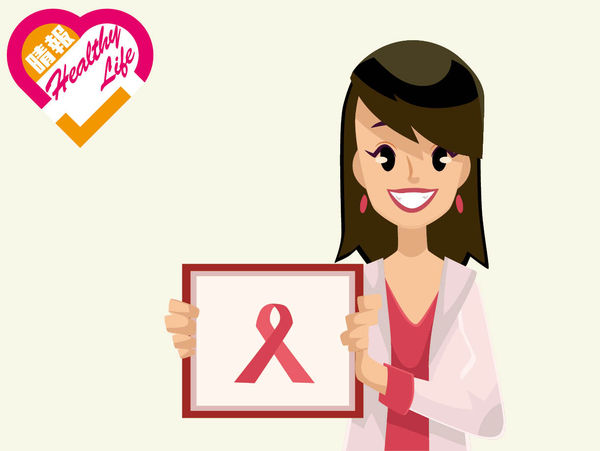
乳癌是本港女性頭號殺手,但亦是最能以藥物控制的癌症之一,正因如此,不少乳癌患者都認為乳癌「易醫」,或會輕視復發風險。患乳癌的著名國際巨星相隔25年後復發的案例,提醒了乳癌患者注意復發風險,作定期檢查。
7成患者 誤解乳癌易治好
去年,經典歌舞電影《油脂》女主角、69歲澳洲女星Olivia Newton John在社交網站表示乳癌復發。她於1992年患上乳癌,康復後更於澳洲成立「癌病研究中心」,關注癌症病人並宣揚抗癌信息。時隔25年,去年她因感背痛前往檢查,竟發現乳癌復發並擴散到骶骨。
「癌症資訊網乳癌關愛組」去年7月發布的調查指出,本港75%乳癌患者認為乳癌較易治療、生存率較高及較高機會康復,62%人認為即使癌症不幸復發或擴散,仍比其他癌症易治療,反映市民的誤解。臨床腫瘤科專科梁廣泉醫生指,雖然乳癌對藥物的反應好,是較容易以藥物控制的癌症,但復發始終比原發難醫治。據香港乳癌基金會提供數字,乳癌復發的死亡率為2成。
梁醫生指,乳癌根據細胞特質可分為4類︰導管A型、導管B型、HER2型、及三陰型;其中,導管A型可以很遲才復發,遠至初次病發後10至15年仍有一定復發機會。他估計Olivia Newton John屬於導管A型,但相隔20多年後再復發並不常見。他解釋,腫瘤惡性程度、乳癌期數、及類型均會影響復發率。
香港乳癌基金會創會人張淑儀醫生指,乳癌復發可分為局部和遠端兩類。局部復發是癌細胞進入乳房淋巴,一般是可醫治的;遠端復發則是癌細胞入血管擴散至內臟器官,如肝、骨和腦,足以致命。復發特徵包括乳房出現硬塊、骨痛、咳嗽、肚脹等。
有個案 28年後腫瘤轉移
梁廣泉醫生的一名女病人於1985年、31歲那年確診左邊乳房有腫瘤,屬第二期癌症,有早期淋巴轉移;同年她進行全乳切除手術,之後有進行電療及服食荷爾蒙藥。至28年後,2013年時,近60歲的她覺得右邊盆骨痛,檢查之下竟發現癌症出現骨轉移,由頭骨、肋骨、至腰骨等都有癌細胞,抽針確認了是乳房腫瘤轉移,荷爾蒙受體及HER2受體均呈陽性反應。幸而立即使用標靶藥及化療令其病情受控,目前病情仍在控制中。
該病人在復發前的身體都是健康的,身體徵狀或飲食上都沒見有明顯問題,一直相安無事。梁強調定期檢查非常重要,以此個案為例,時隔28年再復發是非常少見的,及早發現對於醫治復發非常重要,如有懷疑應該立即求診。
記者︰黃詠雯
編輯:林子豐
美術:熊偉然

醫生指過往曾有研究指運動可減低患乳癌風險,故建議康復者保持適量運動。(iStock)
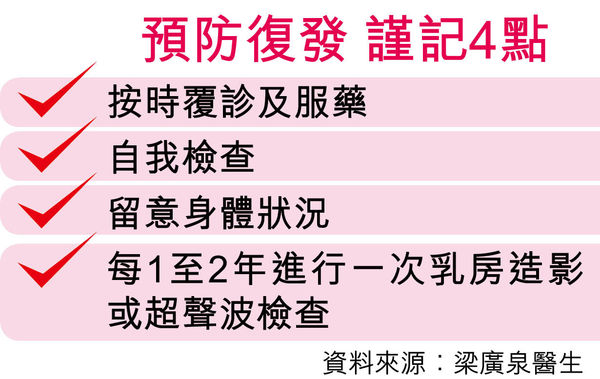
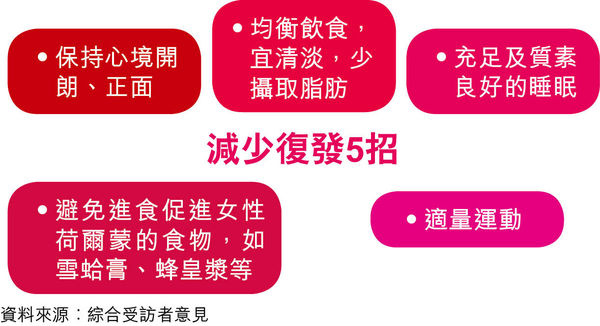
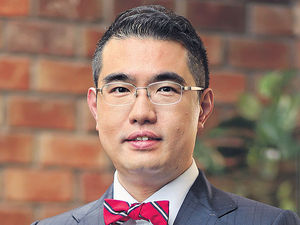
梁廣泉醫生
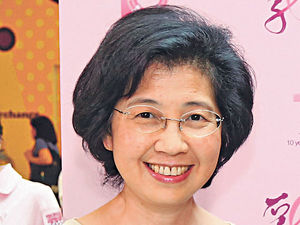
張淑儀醫生
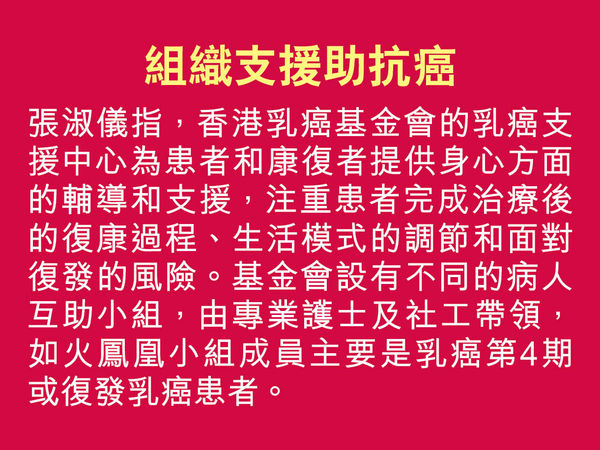
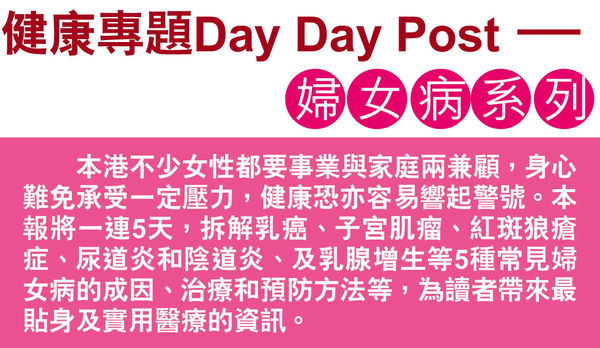
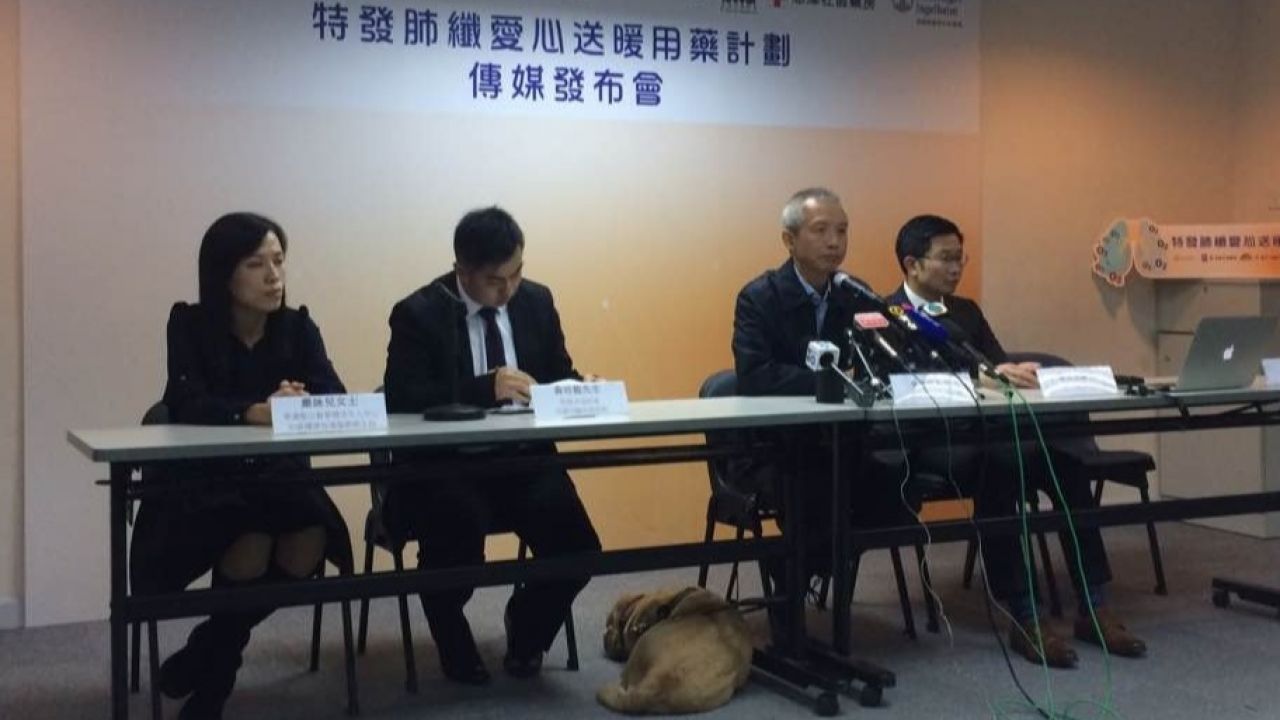
香港罕見疾病聯盟公布,針對罕見病特發性肺纖維化提供「特發肺纖愛心送暖用藥計劃」,讓在公私營醫療機構求診的患者能以較相宜價錢用藥,並在用藥兩年後免費用藥。(陳倩婷攝)
特發肺纖維化是呼吸系統疾病,呼吸系統科專科醫生溫志堅指,特發肺纖的存活率大約3至5年,比多種癌症更低,香港現時有約350名特發肺纖患者。
香港罕見疾病聯盟今次聯同呼吸系統科專科醫生、非牟利社區藥房及藥廠合作,將新研發的藥物「尼達尼布」引進公私營醫療市場,這種藥物2016年已於衞生署註冊,但未被納入藥物名冊內,即病人要自付藥物全費。溫志堅引研究結果指,服用尼達尼布的特發肺纖患者每年肺功能下降率能減低五成,藥物亦有效減低急性發病率達68%。
在新計劃下,特發肺纖患者在私家專科醫生求診後,可由該醫生直接出藥及收費,若在公立醫院求診的患者,可持藥物處方到指定非牟利社區藥房配藥。患者首24個月需自付藥費,若在公營醫療機構求診,第6、12、16、20及24個月免藥費,第25個月起免藥費,直至醫生改變處方為止。
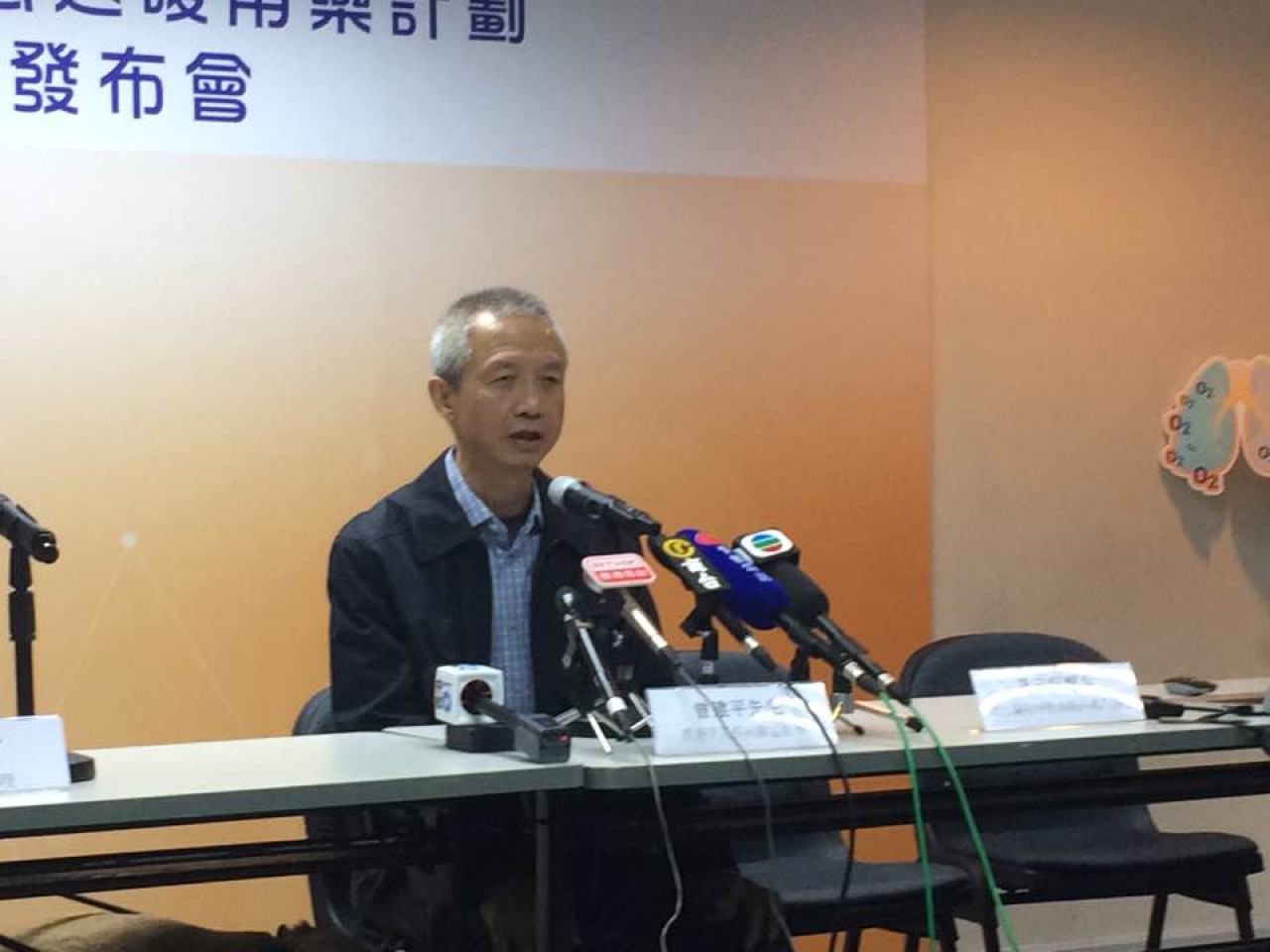
曾建平建議醫管局盡快將特發肺纖的新藥納入安全網,令更多病人受惠。(陳倩婷攝)
促醫管局盡快納入安全網
罕病聯盟會長曾建平先生指,雖然近日多了聲音關注罕見病人,但不能指望特首親自與每個病人見面,「政府有政府做嘢,民間都想做多啲」,他建議醫管局盡快將特發肺纖的新藥納入安全網,令更多病人受惠,又希望今次民間計劃推出後,可令更多藥廠及機構關注罕見病患者的需要。
參與計劃名單:
全港的註冊呼吸系統科專科醫生
指定非牟利社區藥房:
香港藥學服務基金配安心藥房
香港聖公會麥理浩天人中心慈惠社區藥房
聖雅各福群會惠澤社區藥房
文章來自: 香港01